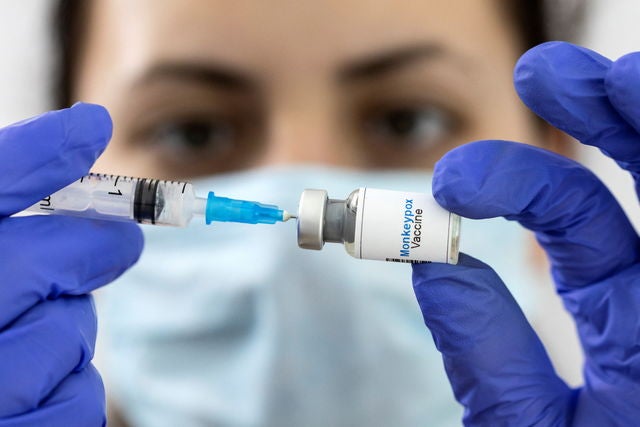Monkeypox is exploiting one of the great global health successes – the eradication of smallpox
The monkeypox outbreak in Europe and North American is an opportunity to revisit lessons from the eradication of smallpox and best practices in vaccine delivery and pandemic preparedness

In the past two weeks, Australia, Britain, Belgium, Canada, France, Israel, Italy, Portugal, Spain, Sweden, and the United States have all reported monkeypox infections. Thus far, the symptoms have been mild and there have been no reported deaths.
Ironically, the monkeypox outbreak was made possible, in part, by one of the global health community’s most remarkable successes – the eradication of the far deadlier and more contagious smallpox virus.
Smallpox and monkeypox are related. And the smallpox vaccine offers protection against monkeypox. When the World Health Assembly declared smallpox eradicated in 1980 and countries suspended their smallpox vaccination campaigns, that left younger generations of unvaccinated people at risk for more rare and mild related viruses, including monkeypox.
Anne Rimoin, an infectious diseases epidemiologist at the University of California, Los Angeles, who has studied monkeypox since 2002, was quoted as saying, “We knew all along, as population immunity waned and potentially individual immunity waned for those who were vaccinated, we would potentially see cases of monkeypox or other poxviruses spreading.”
Smallpox is the only infectious disease that has been eradicated globally. The elimination of the disease demonstrates the potential of global partnerships and offers lessons for health leaders working to accelerate progress against a range of childhood diseases.
The global health community's success against smallpox was the result of widespread immunization and surveillance campaigns conducted by thousands of health workers around the world for a decade. The partnership, led by the WHO, identified all cases of the disease and delivered a vaccine to those afflicted and their contacts. In all, more than half a billion vaccinations were administered to eliminate one of the world’s deadliest diseases that had plagued humankind for thousands of years and killed an estimated 300 million people in the 20th century alone.
It cost an about US$300 million to eradicate smallpox. That investment has saved the world many times that amount in reduced healthcare expenses, lives saved, and misery avoided.
The eradication of smallpox has inspired continued efforts to eliminate other infectious diseases. The most high profile of these efforts is the global polio eradication program. Polio remains endemic in just two countries, Pakistan and Afghanistan. There is no treatment or cure for either smallpox or polio. Both can only be prevented by vaccination.
Exemplars in Global Health researchers are studying how low and middle income countries have mounted successful vaccination campaigns. They have identified Nepal, Senegal, and Zambia as exemplars in increasing vaccination rates for childhood immunization through three key strategies.
First, each country has built strong delivery systems capable of delivering tailored strategies to reach under-served communities. Vaccine delivery strategies often include providing health services outside of health posts and clinics, for example in schools and markets. These outreach vaccination efforts coupled with campaigns can help rapidly immunize many people at once.
Second, these countries have involved communities in vaccination campaigns. Communications efforts have helped communities understand the value of vaccines and demand them as an essential health service. Active community engagement, led by and including leaders from within communities, have been proven effective both in countering misinformation and vaccine hesitancy.
Finally, these countries have sustained vaccine coverage by adapting to changing contexts, including reductions in funding, shifting migration patterns, and disease outbreaks.
In the case of Zambia, health leaders have focused on improving equitable access to healthcare. As part of this effort, the country has increased the percentage of rural households living within five kilometers of the nearest health facility from 50 percent in 2006 to 79 percent in 2016.
Zambia also invested in training, recruiting and retaining health staff and supplemented their ranks by formalizing the role of community-based volunteers and integrating them into health service delivery.
These efforts, and other strategies, have helped Zambia improve its DTP3 vaccination rate from 49 percent in 1983 to 88 percent in 2019.
Research findings on Nepal and Senegal’s vaccination success are expected later this year.
At the same time, reports that monkeypox had been spreading at an accelerated rate in Nigeria over the past few years before jumping to Europe, highlights lessons learned from the pandemic – specifically that diseases do not stop at international borders and need to be monitored everywhere to keep everyone, everywhere safe. Exemplars in Global Health researchers also have highlighted best practices and lessons learned in pandemic preparedness.
